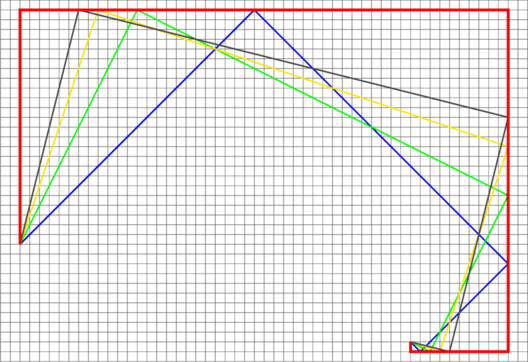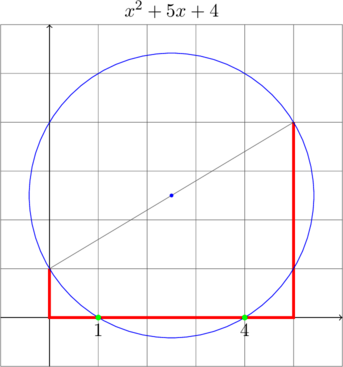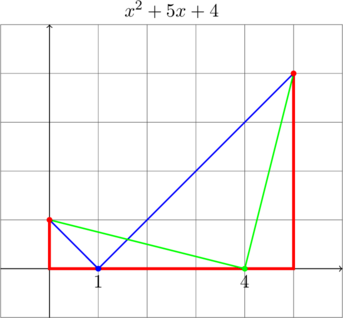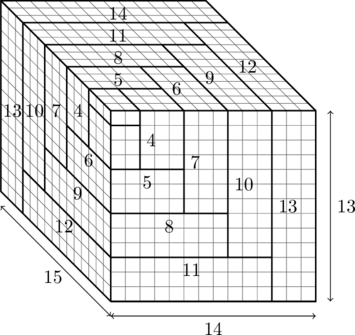genfrac{left-delim}{right-delim}{thickness}{mathstyle}
{numerator}{denominator}
![]()
![]()
![]()
![]()
![]()
![]()
Like this: ![]()
![]()
[a+AB b-A^2]
[c-A^2 d+AB]
![]()
Moving north-east A times produces: ![]()
![]() .
.
Moving north-east A times produces: ![]() .
.
How to construct:
Start with any h-line: four squares along a horizontal line with ![]() , e.g.
, e.g. ![]() :
:

Extend the arithmetic progressions along the diagonals:

Then fill in a diagonal next to one of these 2, with any arithmetic progression. e.g:

Then all the empty squares have been determined and can be filled in, making the sums ![]() equal across all line segments (the h-lines and v-lines).
equal across all line segments (the h-lines and v-lines).
Then when drawing the squaring, draw the squares of negative size on the other side of the line from where they ‘should’ be, e.g. ![]() :
:

It seems that any grid of numbers constructed this way makes a tesselation of the plane.
Also, it seems that all the ![]() -sized squares (I mark them with a small circle on the squaring) lie in a straight line, no matter what sequences are used. I’m sure there’s an obvious reason for that!
-sized squares (I mark them with a small circle on the squaring) lie in a straight line, no matter what sequences are used. I’m sure there’s an obvious reason for that!
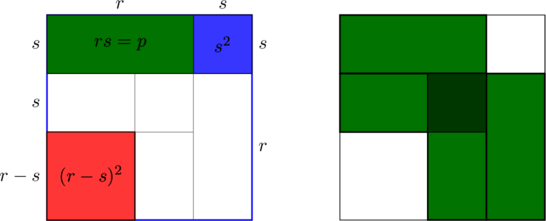
Unfortunately TikZ has too many bugs with barycentric plotting. ARGGHH! Unusable. Not slight – massive and weird errors.
![Rendered by QuickLaTeX.com \[\cfrac{\dots *}{*+\cfrac{*}{*+\cfrac{a}{b+\cfrac{c}{*+\cfrac{*}{*+\dots}}}}}=\cfrac{\dots *}{*+\cfrac{*}{*+\cfrac{am}{bm+\cfrac{cm}{*+\cfrac{*}{*+\dots}}}}}\]](https://www.adamponting.com/wp-content/ql-cache/quicklatex.com-09b22de65766ebf8e887563612aabc08_l3.png)
Nonregular CFs can also be represented as squares in a rectangle.
![Rendered by QuickLaTeX.com \[e=1+\cfrac{2}{1+\cfrac{1}{6+\cfrac{1}{10+ \cfrac{1}{14+\cfrac{1}{18+\dots}}}}}\]](https://www.adamponting.com/wp-content/ql-cache/quicklatex.com-69cb4b9f9dab1e68f18cccd25449df81_l3.png)
![Rendered by QuickLaTeX.com \[C_3=1+\cfrac{2}{1+\cfrac{1}{6+\cfrac{1}{10}}}=\frac{193}{71}=2.7183098\dots\]](https://www.adamponting.com/wp-content/ql-cache/quicklatex.com-48c0905fbcd5dc869e684c3bf5f3d3af_l3.png)


e.g. 

Picture of ![]() : 1/(1+1/(1+1/(1+etc
: 1/(1+1/(1+1/(1+etc

